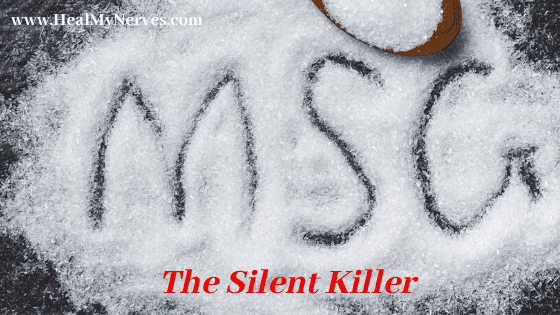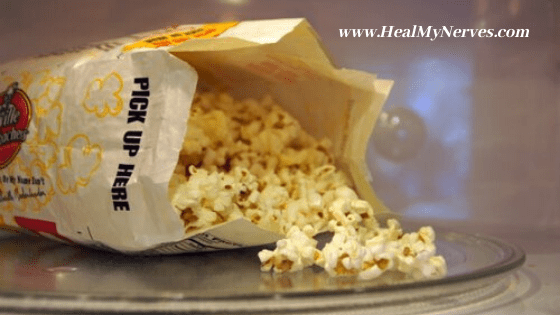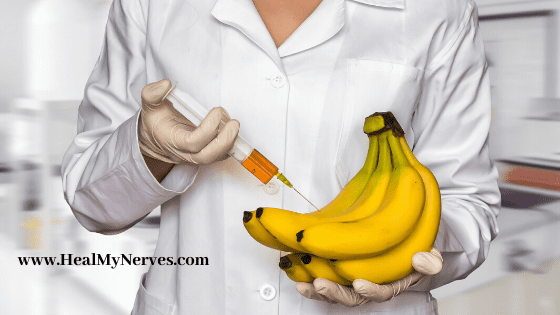Deadly Neurotoxins: What’s Really In Your Food?
Discover which everyday foods contain these poisons
Do you dine out at restaurants, eat foods that come from a can or a box, drink diet beverages, or eat junk food? If you are like most Americans, the answer to this question is resoundingly…YES!
Did you know that these foods contain chemical neurotoxins that can destroy your brain cells, damage your nerves, impair your immune system and cause you to suffer from anxiety or depression.
A neurotoxin is a “substance(s) that interferes with electrical activities of nerves, preventing them from functioning -or- interfering with their normal function. Studies have shown that neurotoxins can shorten the life span of nerve cells by overstimulating them to DEATH or interrupting their communication process.
These toxins have been linked to brain disorders, neurodegenerative diseases such as Alzheimer’s, Huntington’s, and Parkinson’s, and can cause serious reactions including migraines, insomnia, asthma, depression, anxiety, aggression, chronic fatigue, and even ALS. Budding research continues to reveal that neurotoxins play a role with the consistent rise in cases of children diagnosed with ADHD and Autism.
As our food has become more processed (synthetic), our exposure to neurotoxins has increased dramatically over the last 30 years. So, how do neurotoxins get into our foods? Commercial foods, junk foods and restaurant foods are notoriously known for containing high amounts of neurotoxic additives because they make the food taste good and they increase your cravings. It may surprise you to known that the FDA has knowingly allowed neurotoxins in the food we eat and water we drink. In fact, in April 2019 the FDA refused to ban a brain damaging chemical, perchlorate, from food packaging despite requests and evidence presented from the Environmental Defense Fund, Natural Resources Defense Council, Breast Cancer Prevention Partners, Center for Environmental Health, Center for Science in the Public Interest, Center for Food Safety, Clean Water Action, Environmental Working Group and Improving Kids’ Environment who requested a public hearing to challenge the agency’s conclusions, which the agency (FDA) refused.
 Children and unborn fetuses are the most vulnerable to neurotoxins because their bodies and brains are still developing. Tom Neltner, Chemicals Policy Director at Environmental Defense Fund stated, “The agency originally agreed to ban perchlorate in response to compelling evidence and a 2014 petition. The FDA then changed its view of the law in its May 2017 denial of the petition. By denying our challenge today, FDA is avoiding an opportunity to protect kids from the irreversible harm posed by perchlorate exposure.”
Children and unborn fetuses are the most vulnerable to neurotoxins because their bodies and brains are still developing. Tom Neltner, Chemicals Policy Director at Environmental Defense Fund stated, “The agency originally agreed to ban perchlorate in response to compelling evidence and a 2014 petition. The FDA then changed its view of the law in its May 2017 denial of the petition. By denying our challenge today, FDA is avoiding an opportunity to protect kids from the irreversible harm posed by perchlorate exposure.”
The 5 Most common neurotoxins that you may be consuming on a regular basis are:
1. Aspartame
An artificial sweetener found in sugar-free gums, diet foods and drinks. It’s most commonly sold as Equal, Nutrasweet, AminoSweet, Spoonful, and Advantame. Most aspartame is made from the fecal matter of genetically modified bacteria. Studies have linked aspartame to diabetes, migraines, kidney failure, seizures, blindness, obesity, neurological disorders, mental illness and brain tumors.
2. MSG (monosodium glutamate)
 This is a highly addictive flavor enhancer used in processed (boxed or canned foods), restaurant foods, fast foods, pet foods and even baby food. Independent researchers have identified that MSG plays a significant role in neurodegenerative brain disease, including Alzheimer’s, Parkinson’s and Huntington’s disease. MSG typically gets disguised under many other names like, natural flavors, hydrolyzed protein, spices, seasonings and many more.
This is a highly addictive flavor enhancer used in processed (boxed or canned foods), restaurant foods, fast foods, pet foods and even baby food. Independent researchers have identified that MSG plays a significant role in neurodegenerative brain disease, including Alzheimer’s, Parkinson’s and Huntington’s disease. MSG typically gets disguised under many other names like, natural flavors, hydrolyzed protein, spices, seasonings and many more.
Here are some label-listed ingredients that always contain MSG:
- hydrolyzed vegetable protein
- hydrolyzed plant protein
- hydrolyzed protein
- plant protein extract
- calcium caseinate
- sodium caseinate
- yeast extract
- textured protein
- autolyzed yeast
These ingredients may contain MSG:
- malt extract
- malt flavoring
- bouillon
- broth
- stock
- flavoring
- natural flavoring
- beef flavoring
- chicken flavoring
- seasoning
- spices
3. Perchlorate
Perchlorate is a hazardous chemical commonly used in rocket fuel. It’s also used in fireworks, exposives, signal flares, fertilizers, chlorine cleaners and pool chlorination chemicals. Now, thanks to the FDA, it is legal for the commercial food industry to add this to dry food packaging such as cereals, flour, and spices to name a few. Unfortunately, the chemical can migrate from plastic packaging into the food. Perchlorate is a known endocrine disruptor. It impairs the thyroid’s ability to use iodine to make a hormone essential to brain development. For pregnant women, any exposure to perchlorate can pose a risk to a child’s brain and nervous system development.
4. Diacetyl
 Americans love popcorn, but microwave popcorn often contains butter flavoring with the additive diacetyl. It’s already established that this chemical causes a serious condition called “microwave popcorn lung” or bronchiolitis obliterans. This is a condition where your bronchioles are damaged causing a chronic cough and shortness of breath.
Americans love popcorn, but microwave popcorn often contains butter flavoring with the additive diacetyl. It’s already established that this chemical causes a serious condition called “microwave popcorn lung” or bronchiolitis obliterans. This is a condition where your bronchioles are damaged causing a chronic cough and shortness of breath.
Diacetyl can cross the blood-brain barrier, a protective filter which prevents harmful substances from entering the brain. It causes beta-amyloid clumping which is a significant indicator of Alzheimer’s disease.
You won’t see the word diacetyl on the label, but if you see “artificial butter flavor” or “natural flavors,” assume that the product contains this neurotoxin.
5. Sucralose
An artificial sweetener also known by the brand name, Splenda. It is very popular in sugar-free products, especially sugar-free drinks. This neurotoxin is regarded as a chemical cousin to DDT. Sucralose was accidentally discovered while doing research to create a new insecticide, which is why some researchers suggested that sucralose should be listed in the insecticide category. Sucralose is a chlorinated compound. When the body breaks this type of chlorinated compound, it releases toxic chemicals.
6. Aluminum
A heavy metal commonly found in drinking water, baking powder, cookware, antacids, deodorants and vaccines. It is linked with causing Alzheimer’s disease and other neurological diseases. Many vaccines often contain aluminum, such as, Flu and pneumonia vaccines, Hepatitis A and Hepatitis B vaccine, Tetanus and diphtheria. The aluminum contained in these vaccines are injected directly into the body.
7. Flouride
This toxin is very common in drinking water and conventional toothpaste. Fluoride was used to kill rats before it was introduced into consumer products. The fluoride used for consumer products is a mixture of many hazardous chemicals, therefore, there are warning labels on fluoridated toothpaste. For more information on the hazards of fluoride, read our blog article: The Toxic Truth About FLUORIDE
8. Mercury
Most mercury exposure and toxic accumulation in the body occurs from eating contaminated fish, silver fillings and vaccines. One of the most toxic neurotoxins, mercury easily destroys brain tissue.
Fish found to have the highest concentration of mercury:
- Tuna
- Swordfish
- Orange Roughy
- Mackerel
- Marlin
- Shark
- Tile fish
- Blue fish
- Grouper
- Sea Bass (Chilean)
INSIGHTS
 can cause serious health effects when they accumulate in an adult body, but exposure is far more serious for unborn children, infants and even adolescents. While it is impossible to eliminate exposure, a few simple steps will go a long way towards protecting you and your family:
can cause serious health effects when they accumulate in an adult body, but exposure is far more serious for unborn children, infants and even adolescents. While it is impossible to eliminate exposure, a few simple steps will go a long way towards protecting you and your family:
- Read labels: become familiar with key words (as listed above) indicating the toxin. There are many free apps that you can use to identify neurotoxins and other chemicals on labels. One of my favorite is EWG’s Food Scores
- AVOID MSG…at all cost
- AVOID ARTIFICIAL SWEETENERS. Stick with all-natural sweeteners like liquid stevia or monk fruit
- Buy organic whenever possible. Download EWG’s free app ‘Dirty Dozen’. This identifies the top 12 produce with highest concentration of pesticides, herbicides, fungicides.
- Eliminate all Aluminum based cookware and Aluminum foil. This soft metal leaches into food. Only use baking powder that does not contain aluminum (Rumsford baking powder).
- Decrease the use of plastic. Switch to glass, ceramic, and stainless steel containers. Get rid of plastic wrap and switch to parchment paper.
- Avoid fluoridated water. Purchase a whole house water filtration system when your budget allows. An excellent and affordable one can be found at: aquasana.com. Use an under sink carbon-based water filtration system for drinking water (Claryum 3-Stage Max Flow – can also be found at aquasana.com). Get rid of fluoride based toothpastes.
- Ditch microwave popcorn and pop it the good old fashion way…On your stove top. It only takes 5 minutes.
 This blog has been provided by Dr. John Coppola, D.C. and Dr. Valerie Monteiro, D.C. Dr. Coppola and Dr. Monteiro are the founders of the San Antonio Neuropathy Center, and Precision Sport & Spine. They are the leading experts in the field of neuropathy and specifically drug free nerve repair. They are the authors of the critically acclaimed book “Defeat Neuropathy Now …. In Spite of Your Doctor. The doctors have over 25 years of clinical experience.
This blog has been provided by Dr. John Coppola, D.C. and Dr. Valerie Monteiro, D.C. Dr. Coppola and Dr. Monteiro are the founders of the San Antonio Neuropathy Center, and Precision Sport & Spine. They are the leading experts in the field of neuropathy and specifically drug free nerve repair. They are the authors of the critically acclaimed book “Defeat Neuropathy Now …. In Spite of Your Doctor. The doctors have over 25 years of clinical experience.
If you would like to reach the doctors regarding a specific health problem, you may email them at [email protected].
Resources
- International Food Information Council (IFIC) and U.S. Food and Drug Administration (FDA). FDA.gov. “Overview of Food Ingredients, Additives & Colors”, November 2004; revised April 2010
- Dr. J. Barua, Dr. A Bal. “Emerging Facts About Aspartame”. Journal Of The Diabetic Association Of India 1995 : Vol. 35, No. 4.
- Dash.Harvard.Edu. “Let Them Eat Cake? A Historical Analysis Of FDA’s Decision To Approv Aspartame”. (1997 Third Year Paper).
- Xuguang Guo, Yikyung Park, Neal D. Freedman, Rashmi Sinha, Albert R. Hollenbeck, Aaron Blair, and Honglei Chen, “Sweetened Beverages, Coffee, and Tea and Depression Risk among Older US Adults” PLoS One. 2014; 9(4): e94715.
- Humphries P, Pretorius E, Naudé H. “Direct and indirect cellular effects of aspartame on the brain.” Eur J Clin Nutr. 2008 Apr;62(4):451-62. Epub 2007 Aug 8.
- Swati S. More, Ashish P. Vartak, Robert Vince. “The Butter Flavorant, Diacetyl, Exacerbates β-Amyloid Cytotoxicity”. Chemical Research in Toxicology, 2012; 120706140246003 DOI: 10.1021/tx3001016
- Zhou and N. C. Danbolt. “Glutamate as a neurotransmitter in the healthy brain” J Neural Transm. 2014; 121(8): 799–817.
- Cortese BM, Phan KL. “The role of glutamate in anxiety and related disorders.” CNS Spectr. 2005 Oct;10(10):820-30.
- Pippa A Thomson, Barbara Duff, Douglas H R Blackwood, (et al). “Balanced translocation linked to psychiatric disorder, glutamate, and cortical structure/function” NPJ Schizophr. 2016; 2: 16024
- Dariush Mozaffarian, MD, DrPH; Eric B. Rimm, ScD, “Fish Intake, Contaminants, and Human Health
- Evaluating the Risks and the Benefits” JAMA. 2006;296(15):1885-1899. doi:10.1001/jama.296.15.1885
- Young-Seoub Hong Yu-Mi Kim,1 and Kyung-Eun Lee. “Methylmercury Exposure and Health Effects”. J Prev Med Public Health. 2012 Nov; 45(6): 353–363.
- Masahiro Kawahara, and Midori Kato-Negishi, “Link between Aluminum and the Pathogenesis of Alzheimer’s Disease: The Integration of the Aluminum and Amyloid Cascade Hypotheses”. Int J Alzheimers Dis. 2011; 2011: 276393.


Comments are closed, but trackbacks and pingbacks are open.